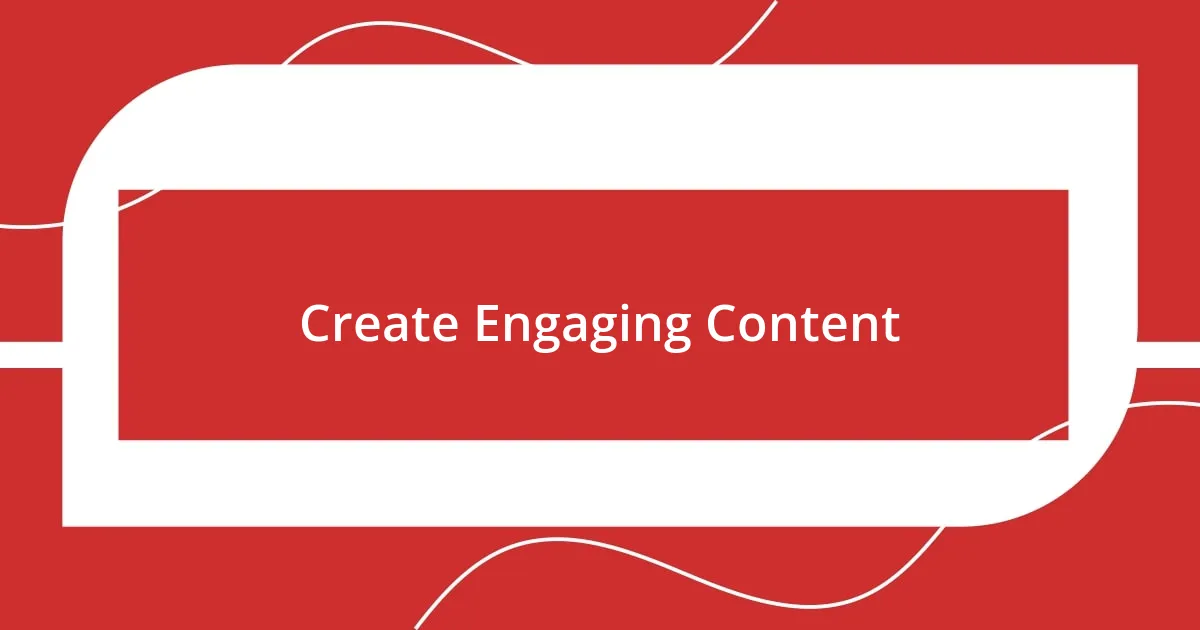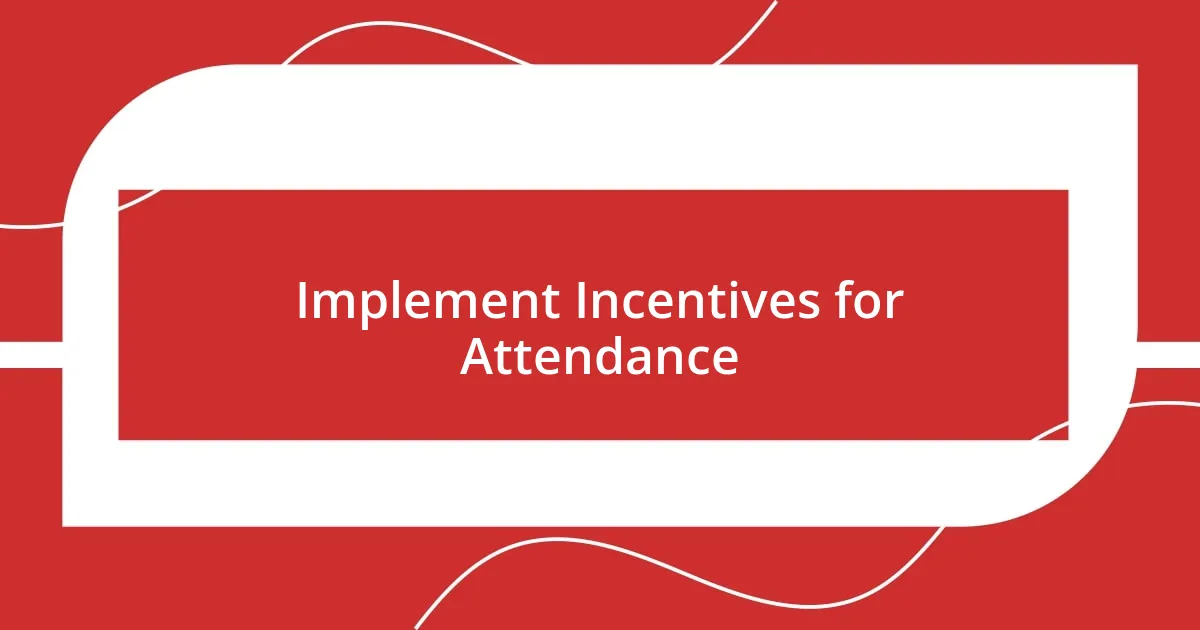Key takeaways:
- Defining your target audience allows for clearer messaging and tailored content, enhancing engagement and excitement for the event.
- Establishing clear objectives focused the planning process and connected deeply with attendees’ desires, leading to successful outcomes.
- Utilizing effective marketing strategies, including social media, email segmentation, and collaborations with influencers, significantly boosts event visibility and attendance.
- Measuring and analyzing results post-event provides valuable insights for refining future strategies, ensuring continuous improvement.

Define Your Target Audience
Understanding your target audience is crucial for any event’s success. I remember when I was planning my first community workshop. I felt overwhelmed, but once I defined who would benefit the most—local small business owners—the entire approach changed. Have you ever realized that when you focus on a specific group, your messaging becomes clearer and more impactful?
I dug deeper into what interests small business owners, like practical strategies for growth and networking opportunities. It was enlightening to see how tailoring content specifically for them not only shaped the workshop agenda but also sparked genuine enthusiasm. Think about it: when was the last time you felt excited about an invitation that truly resonated with you?
Additionally, engaging directly with potential attendees before the event can provide invaluable insights. I reached out through surveys and social media to gather their expectations. This not only helped fine-tune the offerings but also fostered a sense of community even before the event commenced. It’s amazing how simply listening can enhance engagement, isn’t it?

Establish Clear Objectives
Establishing clear objectives sets the foundation for your event’s success. I learned this lesson while planning a fundraising gala. At first, I had so many ideas swirling in my mind, but I soon realized I needed to clarify what I wanted to achieve—was it purely raising funds, building community relationships, or increasing brand visibility? Narrowing it down made the planning process focused and purposeful.
Here are some key objectives to consider when planning your event:
- Define Specific Outcomes: Determine exactly what success looks like for your event.
- Identify Measurable Goals: Establish metrics like attendance numbers or funds raised.
- Align with Your Audience’s Interests: Ensure your objectives resonate with what your attendees care about.
- Set a Timeline: A clear timeframe helps keep your planning on track.
- Plan for Engagement: Think about how to interact with attendees during and after the event.
By honing in on clear objectives, I felt a renewed sense of direction. That focus not only streamlined my efforts but also deeply connected with my audience’s desires, ultimately leading to a successful turnout. It was rewarding to see how a simple step like setting objectives could transform an entire event!

Utilize Effective Marketing Strategies
Utilizing effective marketing strategies can significantly amplify attendance at your event. In my experience, I found that using multiple channels to promote my event created a buzz that I hadn’t anticipated. For instance, I crafted engaging content tailored for social media platforms, balancing fun graphics with informative posts. When I shared sneak peeks and behind-the-scenes moments, the excitement among my followers grew. Have you ever experienced the thrill of an event that felt exclusive? I definitely did, and it’s incredible how this approach turned casual observers into eager participants.
Email marketing also played a crucial role. I remember segmenting my list into different groups, allowing for targeted messaging that resonated with each audience. Instead of sending a generic invite, I personalized messages for small business owners, students, and community advocates. I even sprinkled in personal anecdotes about what attendees could expect, making it much more relatable. This strategy didn’t just inform—it created a deeper connection, transforming my outreach into meaningful dialogue. Can you recall a time when a personal touch in an email caught your attention? That’s the experience I aimed to replicate.
Lastly, collaborating with local influencers and community groups enhanced visibility beyond my immediate reach. I approached a few well-known figures in the area and offered them free tickets in exchange for promotion on their platforms. This collaboration not only extended my marketing efforts but also lent credibility to the event. Their endorsement brought in a wave of attendees, and it was thrilling to see how a simple partnership could lead to unexpected connections. Sometimes, it’s the partnerships we forge that can propel our efforts in ways we never imagined, don’t you think?
| Marketing Strategy | Description |
|---|---|
| Social Media Promotion | Utilizing multiple platforms to share engaging content and behind-the-scenes insights. |
| Email Marketing | Segmenting audiences for targeted messaging to create meaningful connections. |
| Influencer Collaboration | Partnering with local figures to increase visibility and credibility. |

Leverage Social Media Influencers
Incorporating social media influencers into my event promotion was a game-changer. I vividly remember reaching out to a local lifestyle blogger who had a considerable following. After sharing my vision for the event, they willingly promoted it on their social channels, showcasing what made it special. Their enthusiastic endorsement created a sense of community around the event, sparking interest that I hadn’t anticipated. Have you ever felt the energy of a crowd buzzing with excitement? That’s exactly what I experienced when I saw the engagement soar.
Moreover, I found that giving influencers exclusive access to my event enhanced their enthusiasm. I invited a few to join a pre-event tour, allowing them to experience event touches first-hand—from food tastings to sneak peeks of entertainment. Watching them share their authentic experiences with their followers was exhilarating. Their posts felt genuine, like a heartfelt recommendation from a friend rather than a promotional push. Isn’t it amazing how authenticity can drive a connection? That’s what made my event resonate beyond my expectations.
As the influencers shared their excitement, I noticed a ripple effect. Their followers weren’t just liking posts; they were commenting, sharing, and tagging friends, creating organic buzz. I felt a real sense of community forming, which was incredibly rewarding. Engaging with influencers showed me the power of collaboration, turning a singular effort into a collective movement. Have you ever considered how a simple partnership could elevate your project? For me, it was like discovering a key that unlocked a whole new world of potential attendance and connection.

Create Engaging Content
Creating engaging content is absolutely vital for attracting attendees to your event. I’ll never forget a time when I crafted a compelling story around the event theme, weaving in personal experiences and insights. Sharing a heartfelt narrative about why the event mattered to me not only sparked interest but also drew people in on a deeper level. Have you ever felt compelled to attend an event simply because the backstory resonated with you? That emotional connection is what I aimed for.
Visuals play such a crucial role in crafting this engaging content. I remember investing time in creating eye-catching graphics and short videos that conveyed the fun and excitement awaiting attendees. When I showcased snippets of past events or excited attendees, it felt like I was inviting viewers into a special experience. It’s fascinating how a single image can stir curiosity, isn’t it? Seeing reactions to these visuals swirl around social media was incredibly gratifying, as it brought my audience one step closer to the event.
Lastly, I found interactive content to be a fantastic way to engage potential attendees. I decided to incorporate polls and quizzes related to the event theme. Seeing participants interact and share their preferences not only made them feel involved but also helped me tailor aspects of the event to their interests. Have you ever participated in a poll and felt a sense of ownership over the outcome? That’s the kind of excitement I sought to generate, turning casual observers into committed attendees. Engaging content has the power to transform anticipation into participation, and I thrilled at every moment of that transformation.

Implement Incentives for Attendance
Implementing incentives for attendance took my event to an entirely new level. I decided to offer early-bird pricing, and I can still picture the excitement when I announced it. Attendees quickly recognized the value, rushing to secure their spots before time ran out. Have you ever jumped on a deal because you knew it wouldn’t last? This urgency drove ticket sales and created a buzz, reminding me that sometimes, little motivators can ignite big responses.
In addition to pricing, I introduced some fun elements like contests and giveaways. One of my favorite moments was when I announced that anyone who brought a friend could enter to win a special VIP experience. The thrill of the unknown had people excitedly spreading the word! It wasn’t just an incentive; it felt like an invitation to create shared memories. Don’t you love it when you can experience something meaningful with a friend? Those connections amplified attendance and fostered enthusiasm among my guests.
I also explored partnerships with local businesses, offering discounts and perks for attendees. Picture this: ticket holders could present their event pass at local cafes for a free drink or a discount. This strategy didn’t just incentivize attendance; it created a community vibe, encouraging attendees to explore the area together. I was delighted to see people not only come for the event but also share their finds on social media. It reminded me how enhancing the overall experience can turn a simple event into a memorable journey. What kind of impact do you think community partnerships could have on your event? I’d say it’s a game-changer worth considering!

Measure and Analyze Results
To truly understand the effectiveness of your attendance strategy, measuring and analyzing results is essential. After hosting my event, I dove into the data, examining ticket sales, social media engagement, and even feedback forms from attendees. Noticing patterns in the numbers could be a real eye-opener; for instance, did more attendees sign up after implementing incentives? Reflecting on these statistics allowed me to pinpoint what worked and what didn’t. How often do we overlook these valuable insights, thinking they’re just numbers?
I also made sure to discuss findings with my team. Sharing our experiences during a post-event debrief revealed some surprising perspectives. One team member highlighted the importance of social media interactions, noting that certain posts led to spikes in ticket sales. This collaborative exploration of results not only enhanced our understanding but also sparked ideas for future events. Have you ever found that conversations can uncover insights you hadn’t considered before?
Finally, I established key performance indicators (KPIs) to measure success. For me, one vital metric was engagement rates, as they often correlated with attendance rates. After the event, reviewing this data helped me refine my future promotional strategies. By analyzing what resonated most with my audience, I was able to tailor future content and engagement efforts. Isn’t it fascinating how numbers can guide our next steps? Utilizing insights effectively creates a cycle of improvement, ensuring each event outshines the last.















